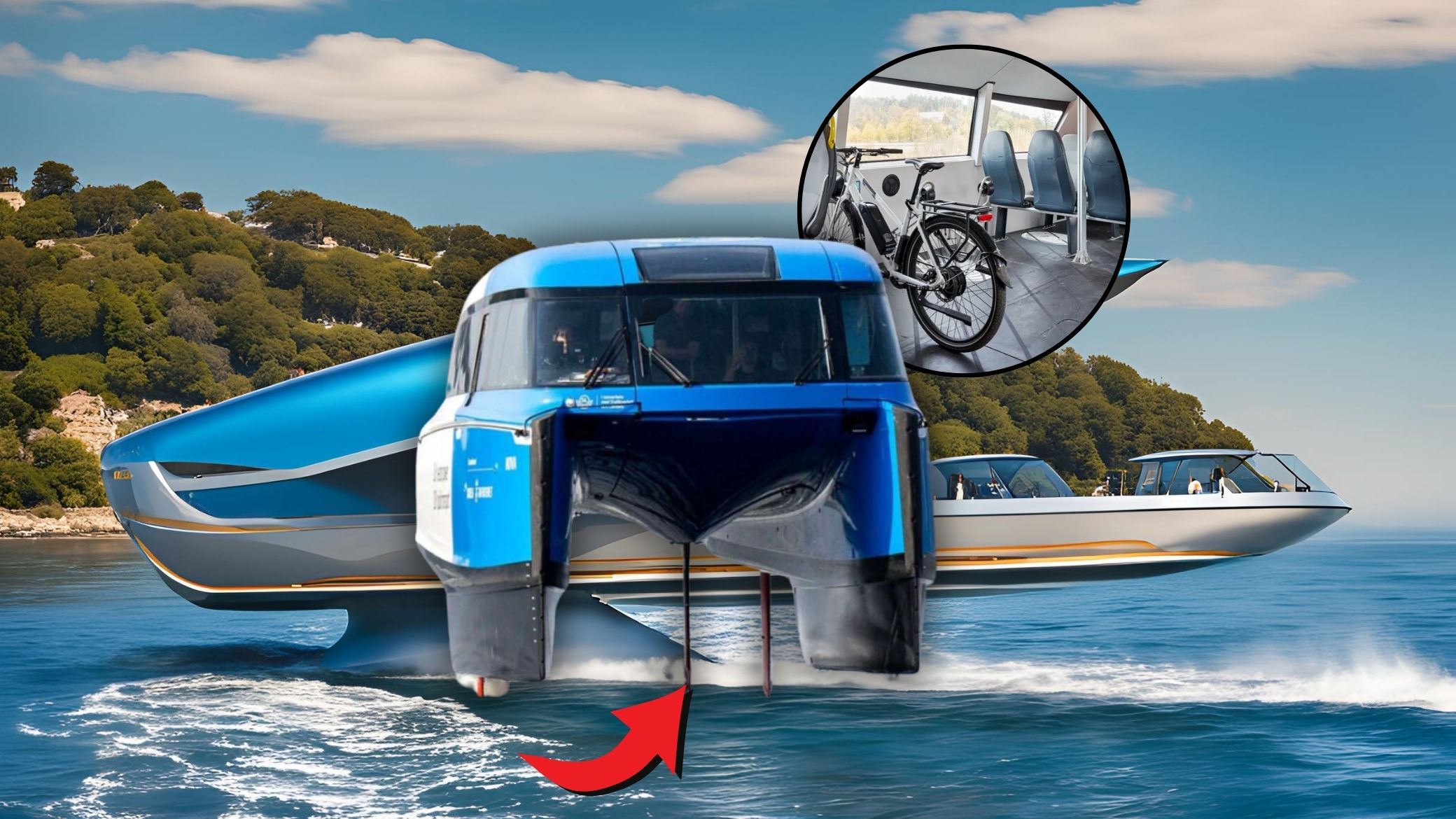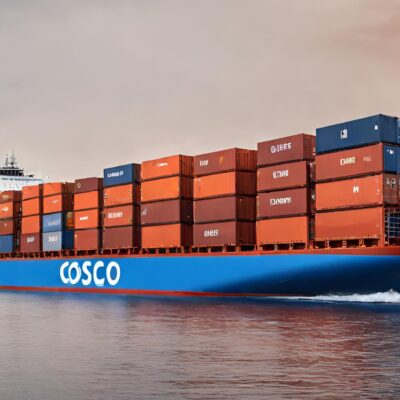The maritime industry is witnessing a transformative shift towards sustainability and innovation with the launch of the world’s first-ever electric hydrofoil ferry. This groundbreaking development represents a significant leap forward in marine transport, promising reduced emissions, operational efficiency, and enhanced passenger experience. This article delves into the innovative technology behind the electric hydrofoil ferry, its environmental impact, operational advantages, and the broader implications for the maritime industry.

The Technology Behind the Electric Hydrofoil Ferry
The electric hydrofoil ferry utilizes cutting-edge technology that sets it apart from traditional marine vessels. At the core of its design are hydrofoils—wing-like structures attached to the hull that lift the vessel above the water as it gains speed. This reduces drag and increases efficiency, allowing for higher speeds and longer ranges with lower energy consumption.
- Hydrofoil Design: The hydrofoil system consists of submerged wings that generate lift, similar to how an airplane’s wings work. As the ferry accelerates, the hydrofoils lift the hull above the water, significantly reducing drag and enabling smoother and faster travel.
- Electric Propulsion: The ferry is powered by electric motors and advanced battery technology. This zero-emission propulsion system not only reduces environmental impact but also offers quieter and more efficient operation compared to traditional diesel engines.
- Energy Efficiency: The combination of hydrofoil technology and electric propulsion makes the ferry exceptionally energy-efficient. By minimizing drag and maximizing lift, the ferry consumes up to 80% less energy compared to conventional vessels, translating to cost savings and reduced environmental footprint.
- Innovative Control Systems: The ferry is equipped with state-of-the-art computer-controlled systems that adjust the hydrofoils in real-time to maintain optimal lift and stability. This ensures a smooth and comfortable ride for passengers, even in varying sea conditions.
Environmental Impact: A Step Towards Sustainability
One of the most compelling aspects of the electric hydrofoil ferry is its positive environmental impact. Traditional marine vessels contribute to greenhouse gas emissions and water pollution, but the electric hydrofoil ferry offers a sustainable alternative.
- Zero Emissions: The electric propulsion system eliminates harmful emissions, including carbon dioxide, nitrogen oxides, and particulate matter. This significantly reduces the ferry’s contribution to air pollution and global warming.
- Renewable Energy Integration: The ferry is designed to be powered by renewable energy sources, such as solar and wind power, further enhancing its environmental benefits. By integrating renewable energy into its operation, the ferry minimizes its reliance on fossil fuels and supports the transition to a clean energy future.
- Reduced Water Pollution: Traditional marine engines can release pollutants and oil into the water, harming marine life and ecosystems. The electric hydrofoil ferry eliminates these risks, promoting cleaner and healthier waterways.
- Noise Pollution Reduction: The quiet operation of the electric motors and the hydrofoil design reduce noise pollution, providing a more serene experience for passengers and minimizing disturbance to marine wildlife.
Operational Efficiency: Redefining Maritime Transport
The electric hydrofoil ferry is not only environmentally friendly but also offers significant operational advantages that can revolutionize maritime transport.
- High-Speed Travel: The hydrofoil technology enables the ferry to travel at higher speeds compared to traditional vessels. This reduces travel time, making it a more efficient mode of transport for both commuters and tourists. For instance, the ferry can complete a 15 km journey in just 30 minutes, half the time it would take by car or public transit.
- Cost-Effective Operations: The reduced energy consumption and maintenance costs of the electric hydrofoil ferry make it a cost-effective option for operators. The long-term savings on fuel and maintenance can offset the initial investment in the advanced technology.
- Enhanced Passenger Experience: The ferry offers a smoother and quieter ride, even in rough sea conditions, thanks to the hydrofoil design and computer-controlled systems. Passengers can enjoy a comfortable and enjoyable journey, free from the vibrations and noise associated with traditional ferries.
- Adaptability to Various Routes: The electric hydrofoil ferry is versatile and can operate on various routes, including coastal areas, rivers, and lakes. Its ability to navigate shallow waters and dock at smaller ports makes it suitable for a wide range of applications, from urban commuting to leisure travel.
Broader Implications for the Maritime Industry
The launch of the world’s first electric hydrofoil ferry has significant implications for the broader maritime industry and sets a new standard for sustainable marine transport.
Industry Innovation
The success of the electric hydrofoil ferry is likely to inspire further innovation in the maritime industry. Other companies may invest in similar technologies, leading to the development of more advanced and sustainable marine vessels.
Market Expansion
The electric hydrofoil ferry’s operational efficiency and environmental benefits make it an attractive option for various markets, including public transportation, tourism, and commercial shipping. This could lead to the expansion of electric ferry services and the adoption of similar technologies in other marine sectors.
Regulatory Influence
The adoption of electric hydrofoil ferries could influence regulatory policies and standards in the maritime industry. Governments and regulatory bodies may introduce incentives and regulations to promote the use of sustainable marine technologies, accelerating the transition to cleaner and greener waterways.
Economic Impact
The development and deployment of electric hydrofoil ferries can create economic opportunities, including job creation in manufacturing, maintenance, and operation. It can also stimulate investment in related industries, such as renewable energy and battery technology.
You might like: The World’s Largest Electric Container Ship: What Are Its Benefits and Challenges?
Potential for Future Developments
The launch of the electric hydrofoil ferry marks the beginning of a new era in maritime transport. There is significant potential for future developments that can further enhance the technology and its applications.
Larger Vessels
The success of the initial electric hydrofoil ferry could pave the way for the development of larger vessels capable of carrying more passengers and cargo. This would expand the technology’s applicability to various marine transport needs.
Advanced Battery Technology
Ongoing advancements in battery technology, such as higher energy densities and faster charging times, will further enhance the performance and efficiency of electric hydrofoil ferries. This will make them even more competitive with traditional marine vessels.
Integration with Smart Infrastructure
The future of electric hydrofoil ferries could see integration with smart infrastructure, such as automated docking systems and digital ticketing platforms. This would streamline operations and improve the overall passenger experience.
Global Adoption
The success of the electric hydrofoil ferry in initial markets could lead to its adoption on a global scale. Countries and cities worldwide may implement similar technologies to promote sustainable marine transport and reduce their environmental impact.
The Bottom Line
The launch of the world’s first electric hydrofoil ferry represents a significant milestone in the evolution of maritime transport. With its innovative technology, positive environmental impact, and operational efficiency, the electric hydrofoil ferry sets a new standard for sustainable marine vessels. As the maritime industry continues to evolve, the adoption of such technologies will play a crucial role in promoting cleaner and greener waterways. The potential for future developments and global adoption further underscores the importance of this groundbreaking innovation.
Read more: 7 Things to Know Before Buying an E-Bike







Solid-State Powerhouse: Dodge Charger EV Redefines Electric Performance
Tesla Model S Plaid Depreciation: Understanding the Factors Behind the Rapid Value Drop